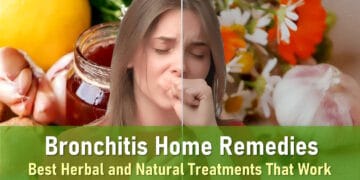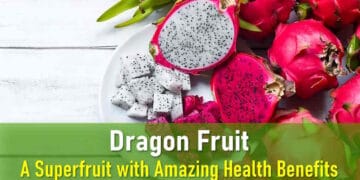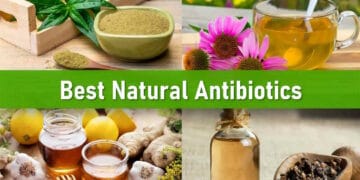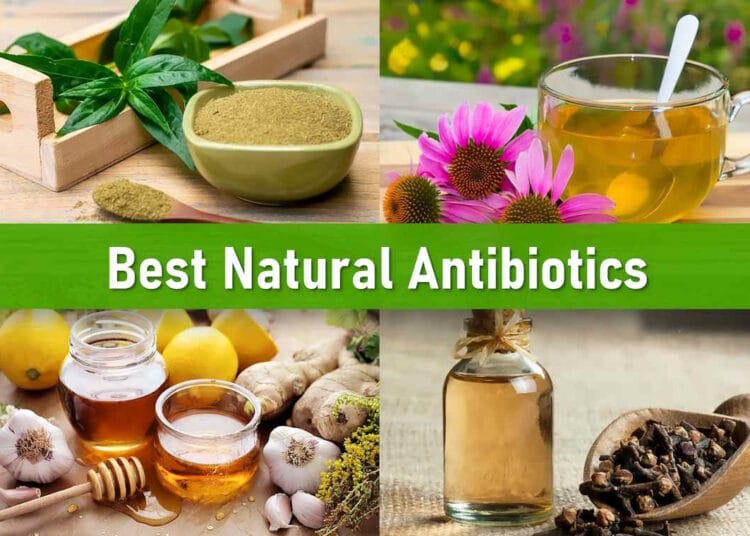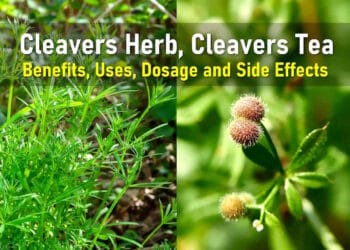The overuse of antibiotics for minor illnesses like the common cold and mild coughs has led to a growing crisis: antibiotic resistance. Many infections that once responded to antibiotics no longer do so, leaving some bacterial strains untreatable. This resistance has given rise to dangerous “superbugs,” such as MRSA, making it crucial to use antibiotics only when absolutely necessary.
Nature, however, provides powerful alternatives. Certain plants, essential oils, and even everyday foods have natural antibiotic properties. Garlic, honey, and various herbs, for example, can inhibit bacterial growth without contributing to resistance. While modern medicine has popularized synthetic antibiotics, many of these drugs were originally derived from natural sources.
Humans and Bacteria: A Delicate Balance
Our bodies exist within a complex ecosystem where bacteria play a vital role. Far from being just harmful invaders, many bacteria support our health. Exposure to diverse microbes, especially in childhood, helps build a strong immune system. Our internal microbiome, the community of bacteria living in and on us, directly influences immune function and overall well-being.
Antibiotics, while sometimes life-saving, disrupt this balance. They kill both harmful and beneficial bacteria, potentially weakening immunity and increasing susceptibility to autoimmune and inflammatory conditions. In high-income countries, overuse of antibiotics is a major factor in reduced microbial diversity, which may explain rising rates of chronic health issues.
How Natural Antibiotics Can Help
With antibiotic resistance on the rise, researchers are turning back to nature for solutions. Plants and fungi have evolved alongside bacteria for millions of years, developing potent antibacterial defenses. Many herbs act as natural antibiotics, offering several advantages over conventional drugs:
- Supporting the immune system: Unlike synthetic antibiotics, herbal remedies work with the body’s natural defenses, enhancing rather than suppressing immunity.
- Protecting the microbiome: Certain herbs, like turmeric, help restore healthy bacterial balance without the collateral damage of pharmaceutical antibiotics.
- Combating resistant bacteria: Some of the most powerful natural antibiotics can even enhance the effectiveness of traditional medications when needed.
Herbs contain complex compounds that fight infections while promoting long-term immune resilience. As the search for amoxicillin alternatives and other solutions continues, nature’s pharmacy offers promising options for safe and effective infection control.
Powerful Natural Antibiotics from Herbs and Foods
Nature provides some of the strongest natural antibiotics in the form of herbs and common foods. These plant-based remedies offer antibacterial properties without contributing to resistance, making them excellent alternatives or complements to conventional treatments.
Andrographis: A Potent Infection Fighter
Known as one of the most powerful natural antibiotics, Andrographis paniculata has been used for centuries in traditional Indian and Chinese medicine. This intensely bitter herb boosts immunity while fighting bacterial, viral, and parasitic infections, particularly in the respiratory system.
Research involving over 7,000 patients found that Andrographis significantly shortens recovery time from acute respiratory infections compared to placebos or standard care. It may also reduce the need for antibiotics by preventing secondary infections. Studies show it works against antibiotic-resistant strains like MRSA and E. coli, while also regulating immune function to lower resistance risks.
Traditionally considered a cooling herb, Andrographis pairs well with warming spices like ginger. It’s also effective for urinary tract infections and was even studied in Thailand as a potential early COVID-19 treatment.
Echinacea: America’s Original Antibiotic
Before antibiotics became widespread, Echinacea was the go-to remedy for infections in the U.S. This immune-modulating herb helps prevent secondary bacterial infections, especially in children prone to recurrent colds.
A clinical trial with 150 children found that those taking Echinacea had:
- 32.5% fewer sick days
- 65% fewer respiratory complications
- 76% fewer antibiotic prescriptions
Echinacea works systemically but can also be used topically as a mouthwash for throat infections or a douche for vaginal infections. High-quality tinctures cause a tingling sensation from immune-boosting alkylamides.
Thyme: A Dual-Action Respiratory Remedy
Thyme’s antimicrobial compound thymol makes it one of the best natural antibiotics for bacterial infections in the lungs. It:
- Breaks up mucus (expectorant action)
- Enhances antibiotic effectiveness
- Supports gut microbiome balance
Use thyme as a tea, syrup, or diluted essential oil (2%) for skin infections. Its probiotic effects on gut bacteria come from antimicrobial essential oils present in the whole herb.
Garlic: The Kitchen Cabinet Antibiotic
This pungent bulb is among the most accessible natural antibiotics for humans. Garlic’s sulfur compounds provide:
- Strong antibacterial and antioxidant effects
- Respiratory support (clears mucus, improves lung function)
- Prebiotic benefits for gut microbiome diversity
Energetically warming, garlic is ideal for colds, coughs, and mild chest infections. Its microbiome-supporting effects make it particularly valuable after antibiotic use.
Clove: A Spice with Strong Antibacterial Properties
These aromatic flower buds from the clove tree do more than flavor foods – they pack serious antibacterial power. Recent studies show clove essential oil effectively inhibits Staphylococcus aureus, including drug-resistant strains. Research suggests clove extract could become a valuable new antibacterial agent, making it one of the most promising herbal antibiotics available today.
Honey: Ancient World’s Antibiotic Powerhouse
As one of the oldest known natural antibiotics for humans, honey has been healing wounds and fighting infections since ancient Egyptian times. Its antibacterial action comes from multiple mechanisms:
- Hydrogen peroxide – Naturally formed in honey, providing antimicrobial effects
- High sugar concentration – Creates an environment where bacteria struggle to survive
- Low pH level – Dehydrates and kills bacteria by drawing out moisture
For external use, apply raw honey (especially Manuka variety) directly to wounds. Internally, a tablespoon of honey can help fight infections – try stirring it into warm herbal tea. Note: Never give honey to infants under 1 year old due to botulism risk.
Myrrh: The Forgotten Antimicrobial
While famous historically, myrrh’s antibiotic properties are often overlooked today. Studies confirm myrrh extract effectively kills common pathogens including:
- E. coli
- Staphylococcus aureus (including MRSA)
- Pseudomonas aeruginosa
- Candida albicans
Generally safe, myrrh may cause diarrhea if taken internally or minor skin irritation when applied topically. Large doses could affect heart function, so always follow package dosage instructions carefully.
Safety Considerations for Natural Antibiotic Use
While natural antibiotics offer many benefits, it’s crucial to use them wisely. Unlike prescription medications, herbal antibiotics and other dietary supplements aren’t evaluated by the FDA for safety or effectiveness before reaching consumers. This means:
- They cannot legally claim to treat or prevent diseases
- Quality and potency can vary between brands
- They may cause side effects, especially at high doses
- Possible interactions with medications or health conditions
Always read labels carefully and consult your healthcare provider before using natural antibiotics for infection, particularly if you have underlying health issues or take other medications.
When Prescription Antibiotics Are Necessary
While natural options work well for minor issues, there are times when conventional antibiotics are essential:
- Serious infections: Conditions like pneumonia or sepsis require prescription antibiotics
- High-risk situations: After surgery, during chemotherapy, or with compromised immunity
- Bacterial infections: When natural remedies haven’t provided relief
Remember that over-the-counter topical antibiotics (like Neosporin) may help minor skin injuries, but more serious infections need professional evaluation. Never use natural antibiotics as a complete substitute for prescribed treatment when it’s medically necessary.
Balancing Natural and Conventional Approaches
Natural antibiotics for bacterial infection can be valuable tools when used appropriately:
- They may help prevent some infections when used proactively
- Can support recovery from minor bacterial infections
- Offer additional health benefits beyond antibacterial effects
However, they cannot replace prescription antibiotics for serious conditions. If you suspect a bacterial infection, consult a healthcare provider for proper diagnosis and treatment recommendations. Take any prescribed antibiotics exactly as directed to avoid contributing to antibiotic resistance.
Final Thoughts
Nature provides us with many powerful antibacterial herbs and foods that can support our health. While these natural antibiotics make excellent additions to a healthy lifestyle and may help with minor infections, they work best as part of a balanced approach to wellness. For optimal health outcomes:
- Use natural preventatives like garlic and honey regularly
- Try herbal antibiotics at the first sign of minor infection
- Seek professional care for persistent or serious symptoms
- Follow medical advice when prescription antibiotics are needed
By understanding both the power and limitations of natural antibiotics, you can make informed choices about your health while helping combat the growing problem of antibiotic resistance.







